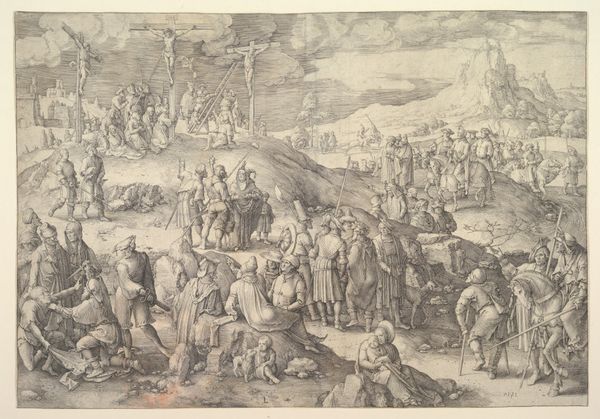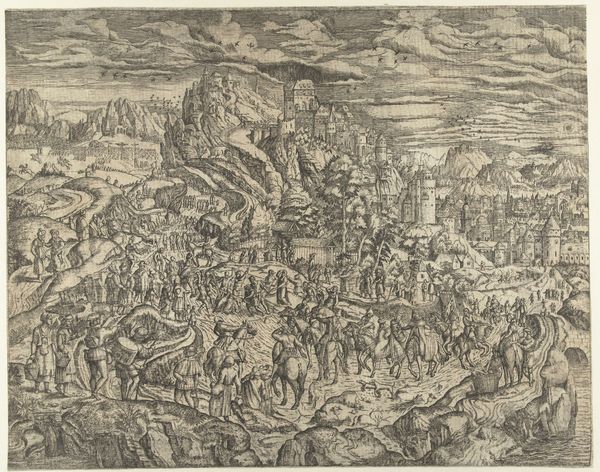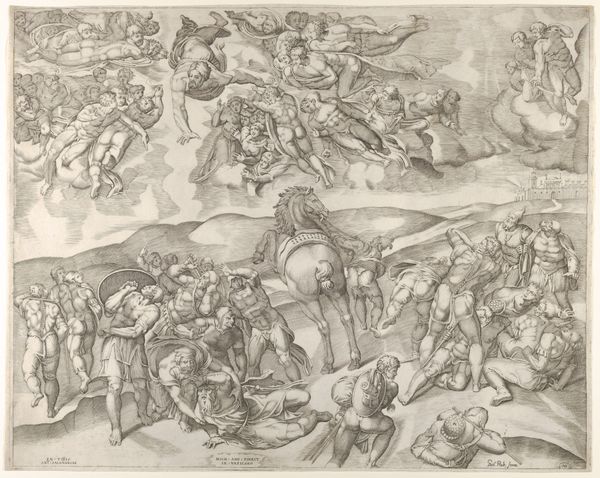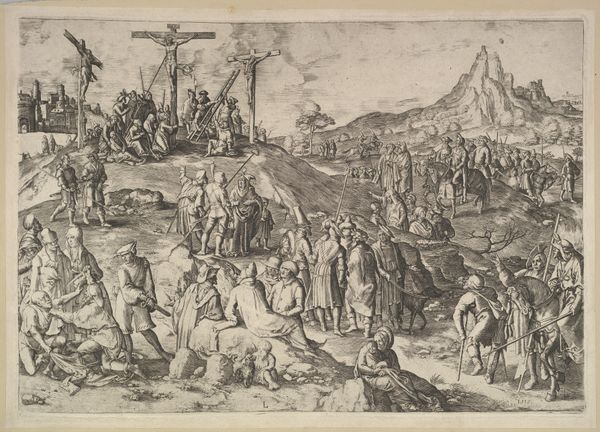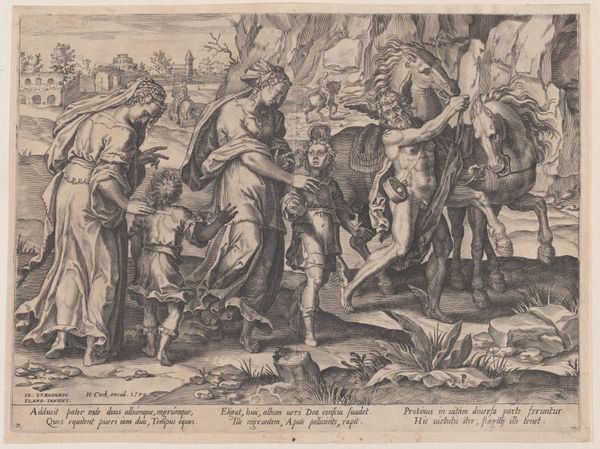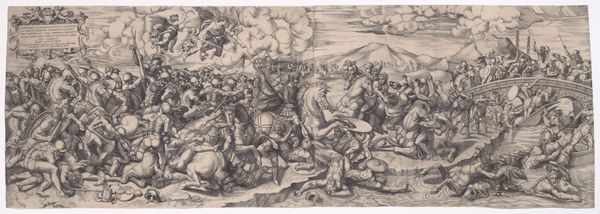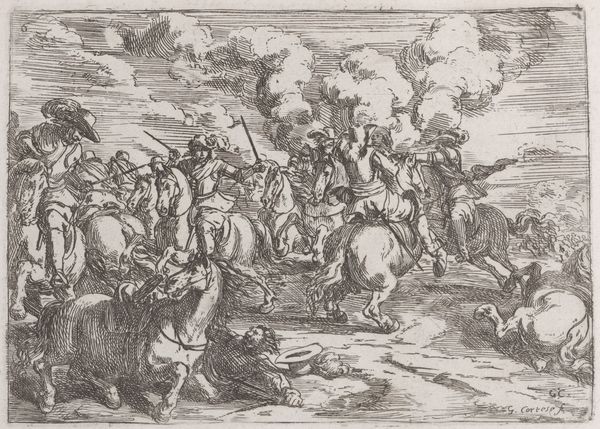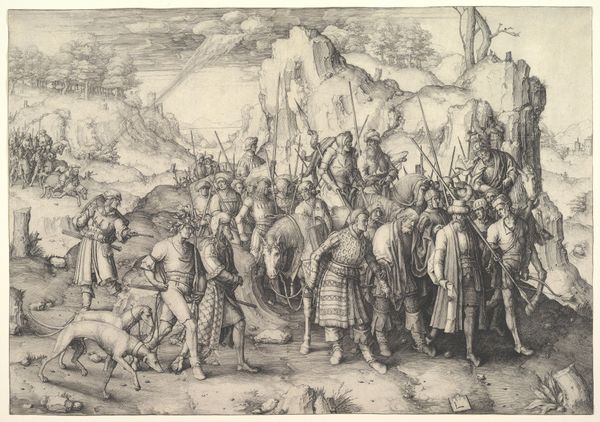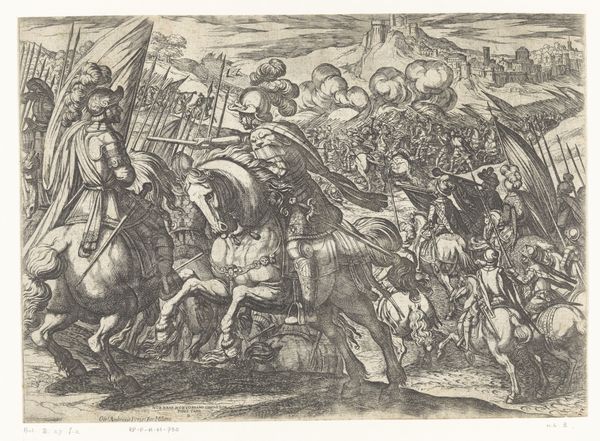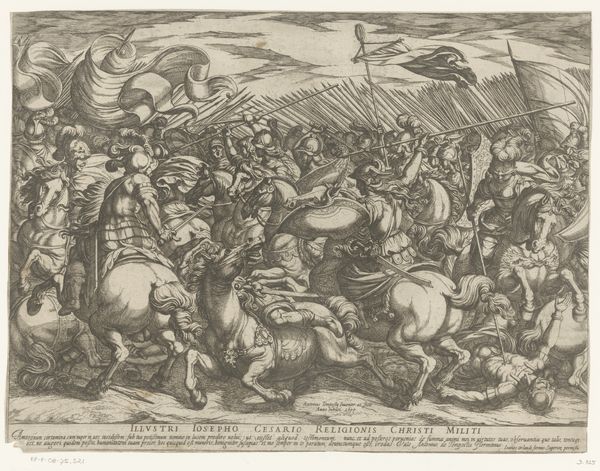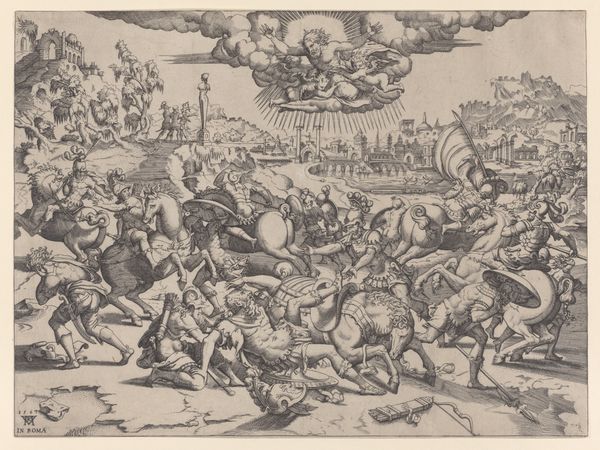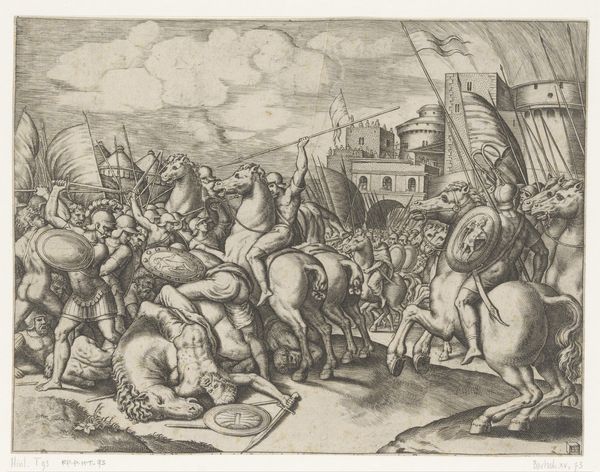
print, engraving
#
narrative-art
# print
#
landscape
#
figuration
#
history-painting
#
northern-renaissance
#
engraving
Dimensions: 11 1/4 x 16 1/4 in. (28.58 x 41.28 cm) (image)
Copyright: Public Domain
Lucas van Leyden made this engraving, Golgotha, in the first decades of the 16th century. The scene of the crucifixion is set amid a crowd, creating an unsettling image of social breakdown. Van Leyden was a Northern Renaissance artist working in the Netherlands, a region then undergoing significant religious and social upheaval. The artist's choice to depict the crucifixion not as a sacred event but as a chaotic public execution implicates the viewer, asking us to consider the social conditions that allowed such an event to occur. The printmaking medium itself, as a relatively democratic and accessible art form, speaks to the artist's desire to engage a wider audience in this critique. Didactic art was the norm, and an artist who challenged the establishment would be an outlier. Understanding this work fully involves delving into the religious, economic, and political history of the early 16th century Netherlands, using sources that range from theological treatises to records of public life. By examining the cultural context, we can better understand how this image challenges the social norms of its time.
Comments
minneapolisinstituteofart almost 2 years ago
⋮
A prodigious talent, Lucas van Leyden took an original approach to storytelling in Golgotha. He "inverted" the action by placing the crucial event in back, and the more ordinary activities in front. His emphasis on humanity--a falconer and beggar share space with men gambling for Christ's garment--made the Crucifixion accessible, as did the contemporary dress. Yet the crowd's casualness is also disturbing. Lucas's approachable piety reflected the down-to-earth teachings of the Modern Devotion movement in the Netherlands, which called for daily dedication to the Passion.
Join the conversation
Join millions of artists and users on Artera today and experience the ultimate creative platform.
